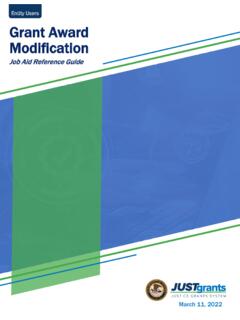Transcription of MCM-ICM: Procedures and Tips for a Great Experience
1 V20210106 MCM-ICM: Procedures and Tips for a Great Experience NOTE: This article accompanies, but does not replace the official Rules, Registration, and Instructions information found at the contest website ( ). Please ensure you understand and follow the rules and Procedures outlined on the contest website. Introduction The purpose of this article is to assist and guide students and advisors participating in The Mathematical Contest in Modeling (MCM) and The Interdisciplinary Contest in Modeling (ICM). In the article, COMAP provides information about the administration of the contests from registration through solution submission, as well as tips to ensure your contest Experience is smooth, successful, and enjoyable. COMAP S Mathematical Contest in Modeling (MCM) and Interdisciplinary Contest in Modeling (ICM) are international contests designed to provide undergraduate level (or below) students with the opportunity to work as team members to engage in and improve their modeling, problem solving, and writing skills.
2 Teams apply mathematics to model, develop, and communicate a solution to a real-world problem. Individuals with a Bachelor s degree or above are not allowed. The article is presented in three sections: Before the Contest contest registration and preparation. During the Contest contest process and avoiding common mistakes made by teams and advisors. After the Contest submitting solution reports and getting results. Look for which indicates an important contest tip. BEFORE THE CONTEST Participants. The MCM/ICM are true team competitions. Each team may consist of one, two, or three (maximum allowed) students. Historically, the best teams have three members. All students on the team MUST be enrolled at the same institution at the start of the contest; COMAP will make no exceptions to this rule.
3 Having a math major on your team is not required, and student team members may be from any field of study. After you have created your team, the next step is to choose an advisor. Advisor. Any faculty, staff member, or student at your institution can fulfill the role of Advisor. The advisor will act as the main point of contact for the team, and will help ensure the team follows the contest rules and regulations. The advisor does not have to be from the mathematics department. We encourage faculty members to serve as team advisors, however students may act as advisors. Contest Preparation. We encourage teams and advisors to prepare for the contest by viewing previous years problems and solutions. You can find these problems and solutions, as well as relevant contest articles at The problems are free to view, and the solutions and articles are available to members.
4 The best contest papers present complete and logical analysis in an organized and clear presentation above and beyond simply addressing the requirements. These papers are easy to read, easy to follow, logical, and comprehensive. These papers will usually include sections that address assumptions with justifications, modeling process(es), results of modeling/analysis, strengths and weaknesses, sensitivity, and conclusions. These papers have in line documentation, footnotes, or endnotes with associated references. Contest Tip Look at problems from previous years to understand the choices you will have when the contest begins. Understand the general differences between MCM and ICM problems, both in terms of the mathematics involved and the topics addressed (MCM: A-discrete, B-continuous, C-data insights; ICM: D-operations research/network sciences, E-environmental sciences, F-policy).
5 Registration. Review contest information and register teams via the contest website ( ) prior to the registration deadline. COMAP will not accept late registrations. The registration fee for MCM/ICM is $100 per team. Please register only the teams that will take part in the contest. Registration fees are non-refundable. The MCM/ICM registration process has been streamlined and split in to 2 parts Advisor Registration and Team Registration. Advisors may register any number of teams and should use the same email address and password for all teams under the same advisor. Step 1 - Advisor Registration: The registration process will take advisors through a series of screens that ask for an email address and contact information. Enter the required information as you step through the screens. Be sure to use a valid current email address so that we can use it to contact you at any point before, during, or after the contest, if necessary.
6 Step 2 - Team Registration: After an advisor has registered they can now login and complete the Team Registration process. Teams must register via the contest website prior to the registration deadline. Team members must be specified prior to beginning of the contest period. The first step in the team registration process is to pay the $100 registration fee. After we receive approval from your financial institution, the system will issue a control number for your team. Your team is not officially registered until you have received a team control number. If you are registering more than one team, you must repeat this process for each team. Be sure to print the page that displays your team s control number, as this page lists the email address and password that you entered when registering. You will need this information later to complete the contest Procedures .
7 Additionally, this is your transaction receipt. You will NOT receive an email confirmation of your registration. Contest Tip Be sure to print or save a copy of your team s receipt with your control number. Team Number and Control Number are the same. Example 2000000. DURING THE CONTEST Viewing Problems. The contest problems will become available precisely at 5PM EST on the starting day of the contest. Team members can view the problems by visiting The contest problems will become available on these mirror sites precisely at 4:50PM EST on the starting day of the contest (Preferred) No password will be needed to view the problems; simply go to any of the contest web sites after the starting time of the contest and you will see a link to view the problems. If you cannot access any of the sites, there may be a problem with your local Internet connection.
8 We highly recommended that you bookmark or save the list of mirror sites above for later reference. Contest Tip The contest problems go live on the mirror sites 10 minutes before the main COMAP website. Access to these mirror sites maybe more responsive as they may have less traffic. Problem Choice. The contest problem page will contain a link to a zip file that contains a folder of 3 MCM problems and 3 ICM problems. Teams are free to choose from any one of the six problems, but should submit a solution to only one problem. Any relevant data files or support materials will be included in the problem folder. Each of the six problems is categorized as shown below: MCM Problem A (continuous) MCM Problem B (discrete) MCM Problem C (data insights) ICM Problem D (operations research/network science) ICM Problem E (environmental science) ICM Problem F (policy) Contest Tip Be sure to read the problem statements carefully before choosing your team s problem.
9 Each problem will have different and specific requirements, such as required memos or letters, specific solution format, and/or page limits. You can work on more than one problem, but should submit a solution to only one of the problems. Contest Assistance. During the MCM/ICM contest period, teams may not seek help in obtaining answers, ideas, or information, or in locating appropriate resources, from any persons outside of their team to include their advisor, other teachers, other students, and/or experts or professionals in a field relevant to the problem. This restriction includes no use of electronic social media such as, but not limited to: emails, texting, chat rooms, interactive blogs, Twitter, Weibo, help or support sites, etc. Additionally, posting or sharing any part or all of the problem statement, your team s solution process, or any partial or complete work in any form or medium during the contest is strictly prohibited.
10 COMAP will disqualify or deem unsuccessful any team that violates this rule. The relevant issue is one of intent: each team of students is expected to develop all of its substantive analysis and solution without the help of others. COMAP continually monitors the Internet during the contest period for violations of contest rules. Comparison Software. COMAP compares each submitted solution to all other solutions of the problem your team chose. The result of this comparison identifies solutions and/or parts of solutions that are exactly and/or similar to other papers. COMAP uses these results to verify the originality of your team s solution. Sources and References. Teams may use any inanimate source of data or materials: computers, software, references, websites, books, etc. All sources must be credited using in-line documentation, footnotes, or endnotes, as well as a full bibliographic citation in a Reference section.











